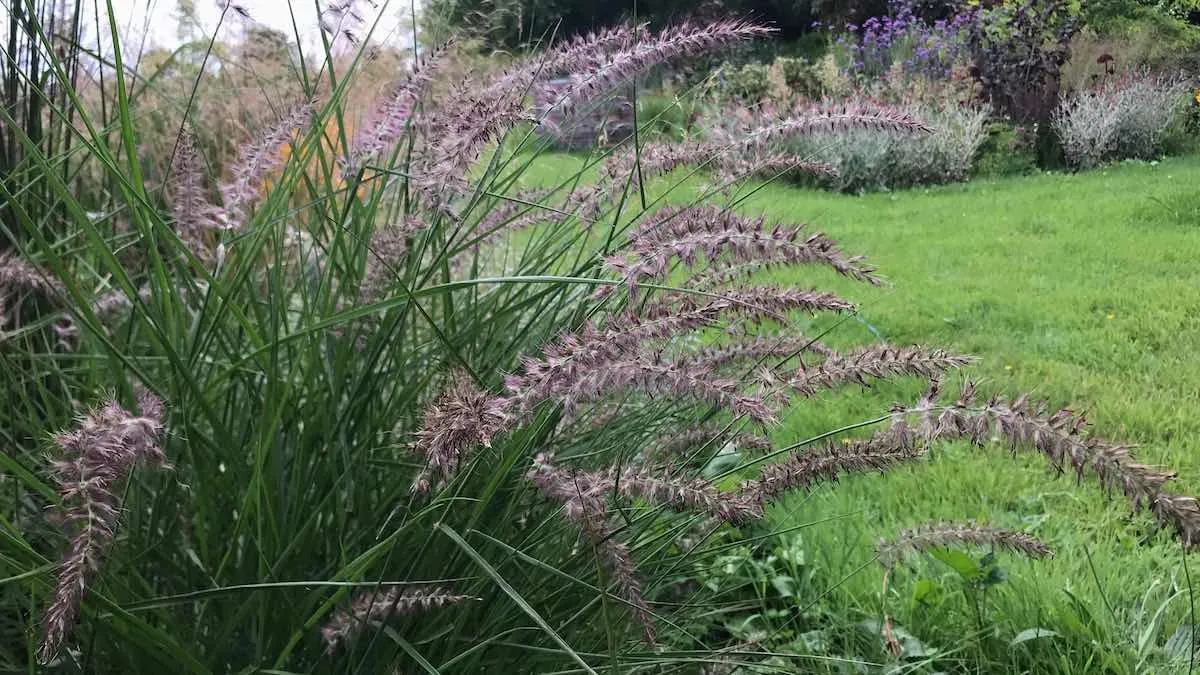Ask a Gardening Question Forum
 Lee Burkhill: Award Winning Designer & BBC 1's Garden Rescue Presenters Official Blog
Lee Burkhill: Award Winning Designer & BBC 1's Garden Rescue Presenters Official Blog

Welcome to the ultimate beginner gardening and garden design forum! Where no gardening question is too silly or obvious. This online gardening forum is run by Lee Burkhill, the Garden Ninja from BBC 1's Garden Rescue and a trusted group of experienced gardeners.
Whether you are a beginner or an expert gardener, it's a safe place to ask garden-related questions for garden design or planting. If you have a problem in your garden or need help, this is the Garden Forum for you!

Posting Rules: This space is open for all garden-related questions. Please be polite, courteous and respectful. If you wouldn't say it to your mum's face, then don't post it here. Please don't promote, sell, link spam or advertise here. Please don't ask for 'cheeky' full Garden redesigns here. They will be deleted.
If you need a garden design service, please use this page to book a design consultation. I will block anyone who breaks these rules or is discourteous to the Garden Ninja Community.
Join the forum below with your gardening questions!
Quote from squillish on 22nd April 2024, 8:21 amGood morning everyone,
I hope you can help point me in the right direction. We have bought a new build property and at the bottom of the garden is a section of drainage crates which means we can’t plant “deep rooting” things there. The crates are 1m underground. The garden is overlooked at the back with already a 6ft fence up, so trellis isn’t an option.
I am thinking of raising the level at the back of the garden adding more height from the crates so we can add high privacy hedges or trees that will hide the neighbours. Please advise what hedges or trees could work with this idea?
thank you all!
Good morning everyone,
I hope you can help point me in the right direction. We have bought a new build property and at the bottom of the garden is a section of drainage crates which means we can’t plant “deep rooting” things there. The crates are 1m underground. The garden is overlooked at the back with already a 6ft fence up, so trellis isn’t an option.
I am thinking of raising the level at the back of the garden adding more height from the crates so we can add high privacy hedges or trees that will hide the neighbours. Please advise what hedges or trees could work with this idea?
thank you all!
Quote from Lee Garden Ninja on 30th April 2024, 9:51 amHi @squillish
Thanks for your question, apologies for the delay I've been busy drawing up designs for Garden Rescue so the forum took a bit f a back seat last week!
Okay, drainage crates and garden design—a fascinating question! For those who don't know what drainage crates are, let's quickly review them before making some planting suggestions!
Garden drainage crates, or attenuation crates or soakaway crates, are modular plastic containers designed to effectively manage excess water in outdoor spaces. They are commonly used in landscaping and garden design to address drainage issues and prevent waterlogging.
Here's why you might use garden drainage crates, especially in new build gardens where the ground is heavy clay or there needs to be plenty of drainage.
Water Management: Drainage crates help collect and store excess rainwater from heavy downpours or irrigation, preventing waterlogging and soil erosion in garden beds and lawns.
Flood Prevention: By temporarily storing excess water, drainage crates reduce the risk of flooding in low-lying garden areas or around the house foundation.
Stormwater Management: They are often used in sustainable landscaping to capture and reuse rainwater for irrigation or to allow it to percolate back into the ground slowly, reducing runoff and the burden on municipal drainage systems.
Versatility: Garden drainage crates come in various sizes and configurations, making them adaptable to different garden layouts and drainage needs. They can be installed beneath lawns, driveways, patios, or permeable paving surfaces. They are a light weight version of drainage especially for new housing estates.
Easy Installation: These crates are lightweight and easy to handle, making installation relatively simple for DIY enthusiasts or professional landscapers. They can be laid directly onto the prepared ground and interconnected to form a continuous underground storage system. They are sometimes argued to be more effective than gravel soakaways due to the mixed sizes of holes they use for drainage, as they don't get blocked by silt as quickly.
Durability: Made from durable, high-density polyethene (HDPE) plastic, drainage crates are resistant to corrosion, chemicals, and root intrusion, ensuring long-term performance and minimal maintenance.
Space Saving: Compared to traditional drainage solutions like gravel-filled trenches or soakaway pits, garden drainage crates require less excavation and provide more efficient use of space, making them ideal for compact urban gardens or areas with limited access.
Environmental Benefits: By promoting natural drainage and reducing runoff, garden drainage crates help replenish groundwater supplies, support healthy plant growth, and contribute to overall environmental sustainability. That is as long as they don't get blocked and people actually plant beneficial plants in their gardens, lay real lawn and don't just use artificial turf instead!
How to Plant above Drainage Crates
You're right that you need to consider the depth of plant roots when planting above drainage crates. Tall trees or very invasive shrubs are a no-no, as they will block the drainage crate holes or potentially disrupt them.
That said, there are plenty of well-behaved plans you can use, especially for Ornamental grasses and herbaceous perennials, which have fibrous roots that cause no damage.
https://youtu.be/SeJaCgSfBrE
The top 8 Ornamental Grasses for Height
Below are my top 8 grasses that provide height and can be grown above drainage crates. Unlike other ornamental grass guides, I've excluded Pampas grass as it's hard to manage and can become a problem in shallow ground.
1.Miscanthus sinensis 'Malepartus' (Chinese Silver Grass)
This tall grass can reach heights of up to 2 meters, producing feathery plumes in late summer and early autumn.
2.Cortaderia selloana (Pampas Grass)
Known for its large plumes of flowers, Pampas Grass can grow up to 2.5 meters tall, adding drama and texture to the garden.
3. Pennisetum alopecuroides 'Red Head' (Fountain Grass)
This clump-forming grass reaches heights of around 1.5 meters and features reddish-purple flower spikes in late summer.
4. Calamagrostis x acutiflora 'Karl Foerster' (Feather Reed Grass)
With upright growth reaching around 1.5 meters, 'Karl Foerster' is prized for its elegant vertical form and feathery flower heads. Bullet proof for beginner gardeners and easy to cut back each winter.
5. Molinia caerulea subsp. arundinacea 'Skyracer' (Tall Moor Grass)
This tall grass can reach heights of up to 2 meters, featuring airy flower panicles that sway gracefully in the breeze.
6. Stipa gigantea (Giant Feather Grass)
With its striking golden flower spikes held high above the foliage, Giant Feather Grass can grow up to 2 meters tall, creating a dramatic focal point in the garden.
7. Miscanthus sinensis 'Gracillimus' (Maiden Grass)
This tall ornamental grass can reach heights of around 1.5 to 2 meters, with narrow, arching leaves and feathery flower plumes in late summer.
8. Panicum virgatum 'Heavy Metal' (Switchgrass)
'Heavy Metal' is a tall, upright grass variety reaching heights of around 1.5 meters, featuring metallic-blue foliage that turns golden in autumn. It's one of my absolute favourite shallow planting tall grasses!
Erianthus ravennae (Hardy Pampas Grass): Similar in appearance to Pampas Grass but more cold-hardy, this grass can grow up to 2.5 meters tall, producing large, fluffy plumes in late summer.
All of the above grasses benefit from a winter prune back to the ground to encourage fresh growth each year.
https://youtu.be/4Xc5J_1sCXk
You can also consider growing evergreen climbers up the fence line to for privacy and help blur the boundaries.
I hope that helps!
Happy Gardening.
Lee Garden Ninja
Hi @squillish
Thanks for your question, apologies for the delay I've been busy drawing up designs for Garden Rescue so the forum took a bit f a back seat last week!
Okay, drainage crates and garden design—a fascinating question! For those who don't know what drainage crates are, let's quickly review them before making some planting suggestions!
Garden drainage crates, or attenuation crates or soakaway crates, are modular plastic containers designed to effectively manage excess water in outdoor spaces. They are commonly used in landscaping and garden design to address drainage issues and prevent waterlogging.
Here's why you might use garden drainage crates, especially in new build gardens where the ground is heavy clay or there needs to be plenty of drainage.
Water Management: Drainage crates help collect and store excess rainwater from heavy downpours or irrigation, preventing waterlogging and soil erosion in garden beds and lawns.
Flood Prevention: By temporarily storing excess water, drainage crates reduce the risk of flooding in low-lying garden areas or around the house foundation.
Stormwater Management: They are often used in sustainable landscaping to capture and reuse rainwater for irrigation or to allow it to percolate back into the ground slowly, reducing runoff and the burden on municipal drainage systems.
Versatility: Garden drainage crates come in various sizes and configurations, making them adaptable to different garden layouts and drainage needs. They can be installed beneath lawns, driveways, patios, or permeable paving surfaces. They are a light weight version of drainage especially for new housing estates.
Easy Installation: These crates are lightweight and easy to handle, making installation relatively simple for DIY enthusiasts or professional landscapers. They can be laid directly onto the prepared ground and interconnected to form a continuous underground storage system. They are sometimes argued to be more effective than gravel soakaways due to the mixed sizes of holes they use for drainage, as they don't get blocked by silt as quickly.
Durability: Made from durable, high-density polyethene (HDPE) plastic, drainage crates are resistant to corrosion, chemicals, and root intrusion, ensuring long-term performance and minimal maintenance.
Space Saving: Compared to traditional drainage solutions like gravel-filled trenches or soakaway pits, garden drainage crates require less excavation and provide more efficient use of space, making them ideal for compact urban gardens or areas with limited access.
Environmental Benefits: By promoting natural drainage and reducing runoff, garden drainage crates help replenish groundwater supplies, support healthy plant growth, and contribute to overall environmental sustainability. That is as long as they don't get blocked and people actually plant beneficial plants in their gardens, lay real lawn and don't just use artificial turf instead!
How to Plant above Drainage Crates
You're right that you need to consider the depth of plant roots when planting above drainage crates. Tall trees or very invasive shrubs are a no-no, as they will block the drainage crate holes or potentially disrupt them.
That said, there are plenty of well-behaved plans you can use, especially for Ornamental grasses and herbaceous perennials, which have fibrous roots that cause no damage.
The top 8 Ornamental Grasses for Height
Below are my top 8 grasses that provide height and can be grown above drainage crates. Unlike other ornamental grass guides, I've excluded Pampas grass as it's hard to manage and can become a problem in shallow ground.
1.Miscanthus sinensis 'Malepartus' (Chinese Silver Grass)
This tall grass can reach heights of up to 2 meters, producing feathery plumes in late summer and early autumn.
2.Cortaderia selloana (Pampas Grass)
Known for its large plumes of flowers, Pampas Grass can grow up to 2.5 meters tall, adding drama and texture to the garden.
3. Pennisetum alopecuroides 'Red Head' (Fountain Grass)
This clump-forming grass reaches heights of around 1.5 meters and features reddish-purple flower spikes in late summer.

4. Calamagrostis x acutiflora 'Karl Foerster' (Feather Reed Grass)
With upright growth reaching around 1.5 meters, 'Karl Foerster' is prized for its elegant vertical form and feathery flower heads. Bullet proof for beginner gardeners and easy to cut back each winter.
5. Molinia caerulea subsp. arundinacea 'Skyracer' (Tall Moor Grass)
This tall grass can reach heights of up to 2 meters, featuring airy flower panicles that sway gracefully in the breeze.
6. Stipa gigantea (Giant Feather Grass)
With its striking golden flower spikes held high above the foliage, Giant Feather Grass can grow up to 2 meters tall, creating a dramatic focal point in the garden.
7. Miscanthus sinensis 'Gracillimus' (Maiden Grass)
This tall ornamental grass can reach heights of around 1.5 to 2 meters, with narrow, arching leaves and feathery flower plumes in late summer.

8. Panicum virgatum 'Heavy Metal' (Switchgrass)
'Heavy Metal' is a tall, upright grass variety reaching heights of around 1.5 meters, featuring metallic-blue foliage that turns golden in autumn. It's one of my absolute favourite shallow planting tall grasses!
Erianthus ravennae (Hardy Pampas Grass): Similar in appearance to Pampas Grass but more cold-hardy, this grass can grow up to 2.5 meters tall, producing large, fluffy plumes in late summer.
All of the above grasses benefit from a winter prune back to the ground to encourage fresh growth each year.
You can also consider growing evergreen climbers up the fence line to for privacy and help blur the boundaries.
I hope that helps!
Happy Gardening.
Lee Garden Ninja


Vuelo Top 10 Garden Blogger Award 2019
Chelsea Flower Show Director Generals Trade Stand Award 2018
5 Star Trade Stand Hampton Court 2018
Garden Media Guild New Talent 2017 Finalist
RHS & BBC Feel Good Gardens Winner 2016
 To my YouTube channel
To my YouTube channel
JOIN THE NINJAS
Join our Ninja community for your Exclusive Discounts
JOIN THE NINJAS

Be the first in line for new Guides, Discount codes and Offers